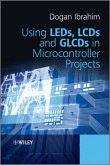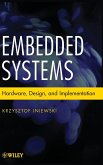This book explores the unique hardware programmability of FPGA (field-programmable gate array)-based embedded systems, using a learning-by-doing approach to introduce the concepts and techniques for embedded SoPC (system on a programmable chip) systems with Verilog. The book contains a large number of practical examples to illustrate and reinforce the hardware and software design concepts and techniques, as well as a complete code listing and experiment problems. The book is designed for upper-level undergraduate and entry-level graduate students in computer engineering, as well as practicing engineers.
Explores the unique hardware programmability of FPGA-based embedded systems, using a learn-by-doing approach to introduce the concepts and techniques for embedded SoPC design with Verilog
An SoPC (system on a programmable chip) integrates a processor, memory modules, I/O peripherals, and custom hardware accelerators into a single FPGA (field-programmable gate array) device. In addition to the customized software, customized hardware can be developed and incorporated into the embedded system as well-allowing us to configure the soft-core processor, create tailored I/O interfaces, and develop specialized hardware accelerators for computation-intensive tasks.
Utilizing an Altera FPGA prototyping board and its Nios II soft-core processor, Embedded SoPC Design with Nios II Processor and Verilog Examples takes a "learn by doing" approach to illustrate the hardware and software design and development process by including realistic projects that can be implemented and tested on the board.
Emphasizing hardware design and integration throughout, the book is divided into four major parts:
Part I covers HDL and synthesis of custom hardware
Part II introduces the Nios II processor and provides an overview of embedded software development
Part III demonstrates the design and development of hardware and software of several complex I/O peripherals, including a PS2 keyboard and mouse, a graphic video controller, an audio codec, and an SD (secure digital) card
Part IV provides several case studies of the integration of hardware accelerators, including a custom GCD (greatest common divisor) circuit, a Mandelbrot set fractal circuit, and an audio synthesizer based on DDFS (direct digital frequency synthesis) methodology
While designing and developing an embedded SoPC can be rewarding, the learning can be a long and winding journey. This book shows the trail ahead and guides readers through the initial steps to exploit the full potential of this emerging methodology.
Explores the unique hardware programmability of FPGA-based embedded systems, using a learn-by-doing approach to introduce the concepts and techniques for embedded SoPC design with Verilog
An SoPC (system on a programmable chip) integrates a processor, memory modules, I/O peripherals, and custom hardware accelerators into a single FPGA (field-programmable gate array) device. In addition to the customized software, customized hardware can be developed and incorporated into the embedded system as well-allowing us to configure the soft-core processor, create tailored I/O interfaces, and develop specialized hardware accelerators for computation-intensive tasks.
Utilizing an Altera FPGA prototyping board and its Nios II soft-core processor, Embedded SoPC Design with Nios II Processor and Verilog Examples takes a "learn by doing" approach to illustrate the hardware and software design and development process by including realistic projects that can be implemented and tested on the board.
Emphasizing hardware design and integration throughout, the book is divided into four major parts:
Part I covers HDL and synthesis of custom hardware
Part II introduces the Nios II processor and provides an overview of embedded software development
Part III demonstrates the design and development of hardware and software of several complex I/O peripherals, including a PS2 keyboard and mouse, a graphic video controller, an audio codec, and an SD (secure digital) card
Part IV provides several case studies of the integration of hardware accelerators, including a custom GCD (greatest common divisor) circuit, a Mandelbrot set fractal circuit, and an audio synthesizer based on DDFS (direct digital frequency synthesis) methodology
While designing and developing an embedded SoPC can be rewarding, the learning can be a long and winding journey. This book shows the trail ahead and guides readers through the initial steps to exploit the full potential of this emerging methodology.








